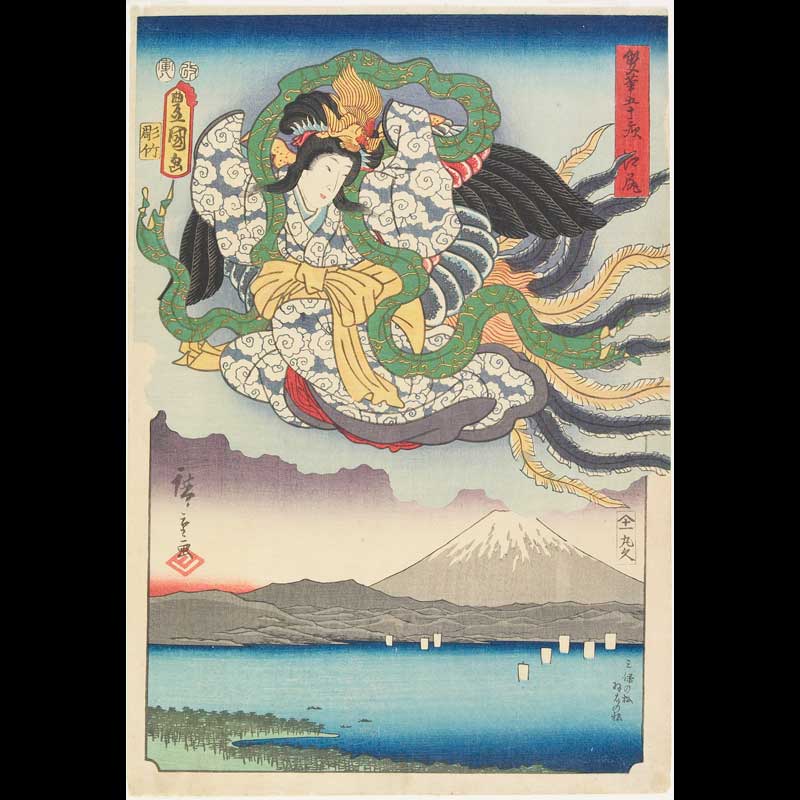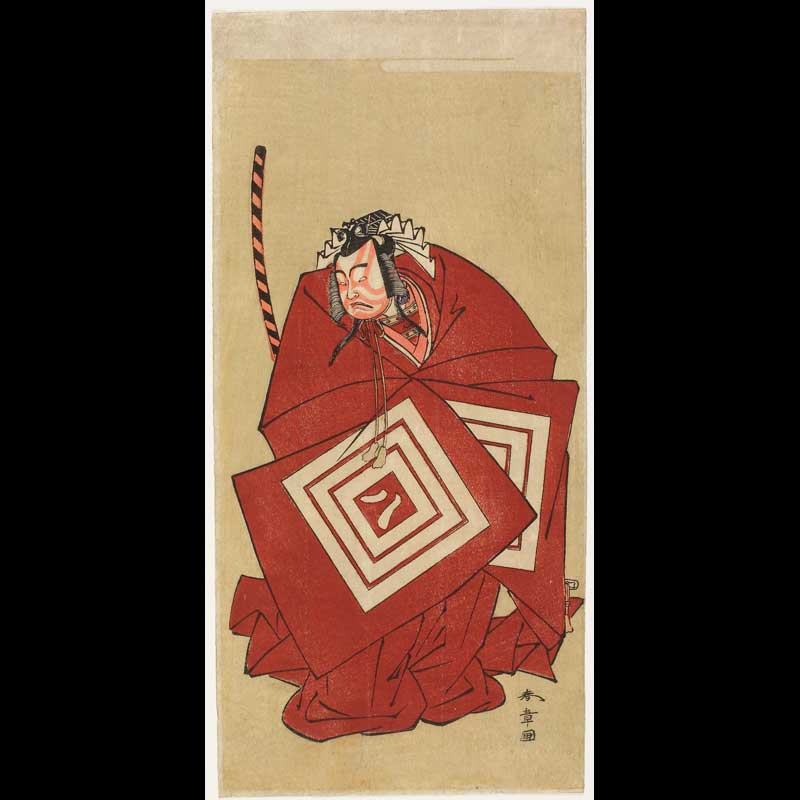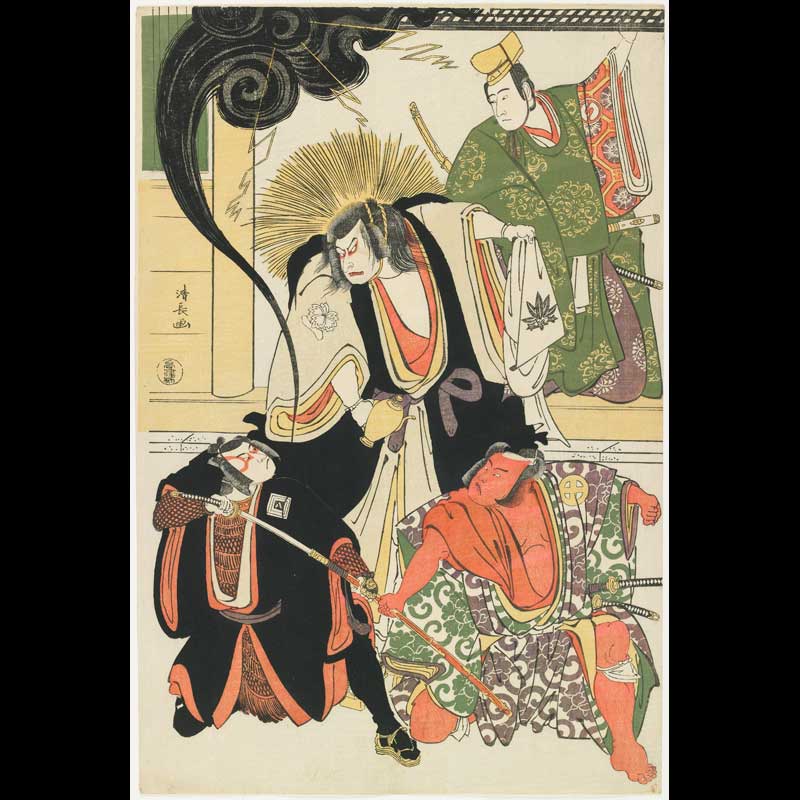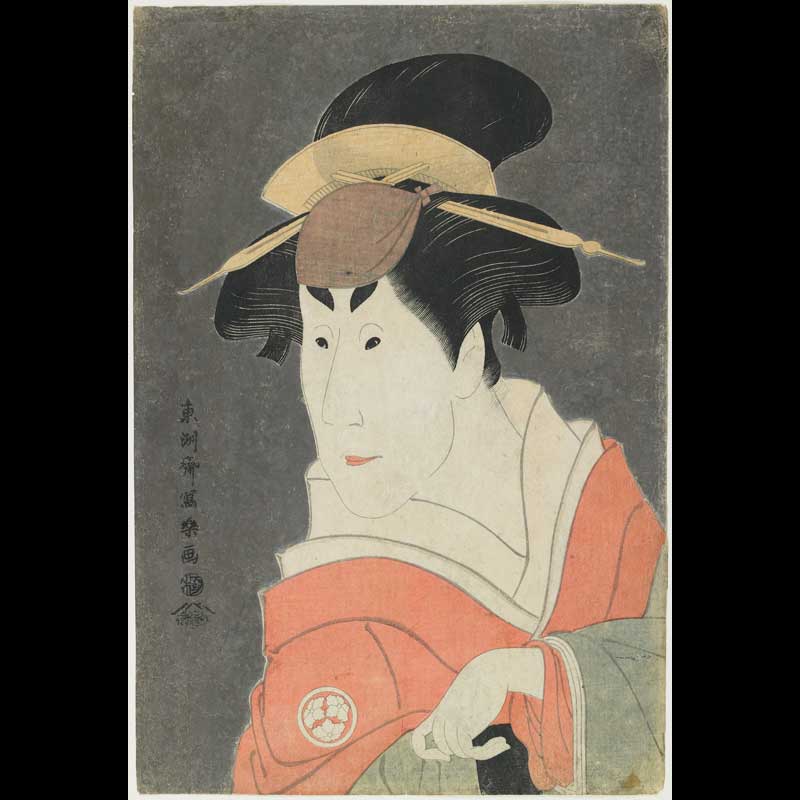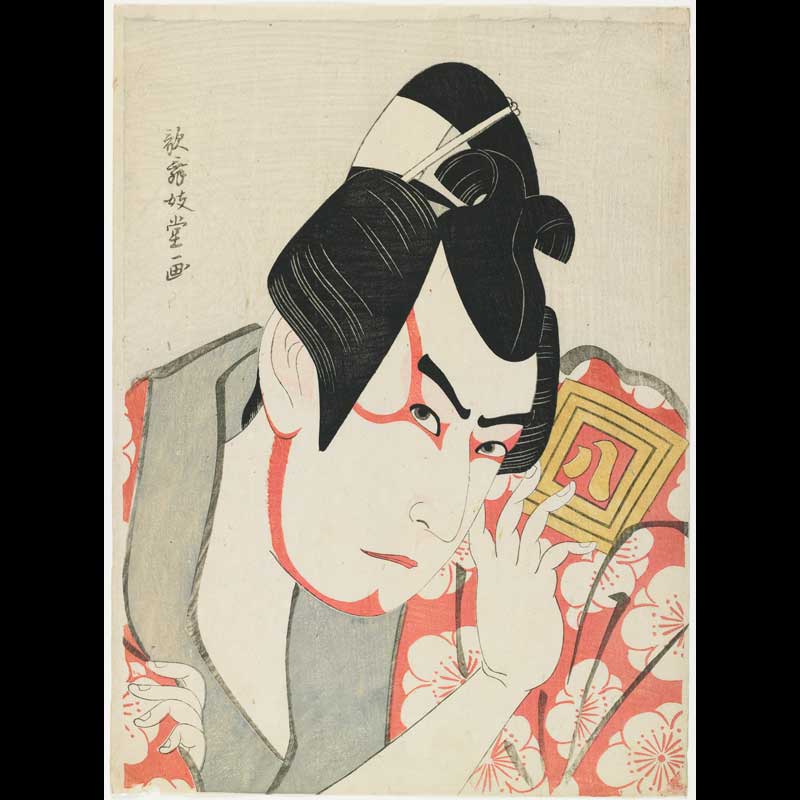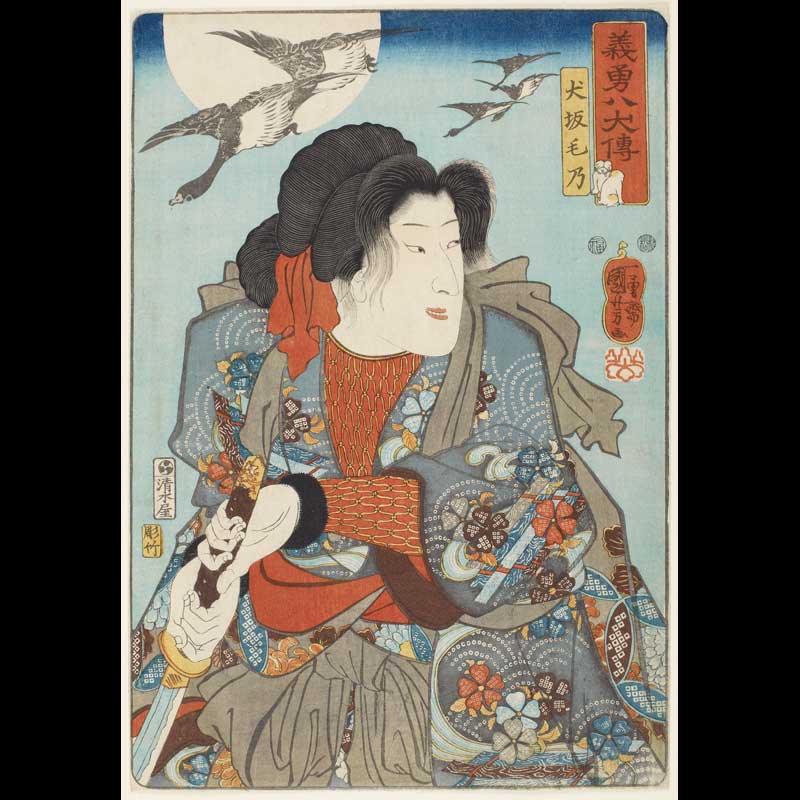Click on the images for a more detailed description.
Kabuki emerged in the early 17th century as a licentious song-and-dance act performed by female troupes at festivals. In an attempt to dictate public morality, the government decreed in 1652 that only adult men could perform on the Kabuki stage. Henceforth, female roles were played by male actors who specialized in evoking femininity through their studied gestures and speech. From its earliest beginnings, Kabuki reflected the interests and tastes of a burgeoning class of commoners who lived and worked in Japan’s newly prosperous cities. The plays fell mostly into two categories: warrior tales of bravery and betrayal set in Japan’s distant past (sometimes with thinly veiled criticism of contemporary government), and melodramatic domestic dramas sensationalizing actual events–such as the execution of a lovelorn young woman accused of arson, or the double suicides of star-crossed lovers.
Kabuki actors specialized in specific roles and became famous for developing their own styles. In general, Kabuki acting is characterized by exaggerated movements and stylized speech designed to heighten the dramatic effect. Trap doors, a revolving stage, and an endless array of visual tricks contributed to the surreal‐even fantastic–quality of the performances. Stage make-up (kumadori), especially for bold and bombastic roles, accentuated the character’s personality by exaggerating the muscles and veins around the eyes and mouth. Elaborate costumes, densely embroidered with bright colors and gold threads, added to the sumptuous and vivid effect.
Possibly a full third of all woodblock prints produced during the Edo period were scenes from Kabuki plays. In general, early print artists portrayed theatrical characters in an exaggerated manner, and the representations bore little resemblance to the actors who performed the roles. By the 1770s, however, artists associated with the Katsukawa school began to capture the actors’ likenesses more realistically. These images, and those that followed, helped catapult actors to stardom, and many enjoyed cultlike status as fans clamored to purchase images of them in roles they perfected and popularized.

